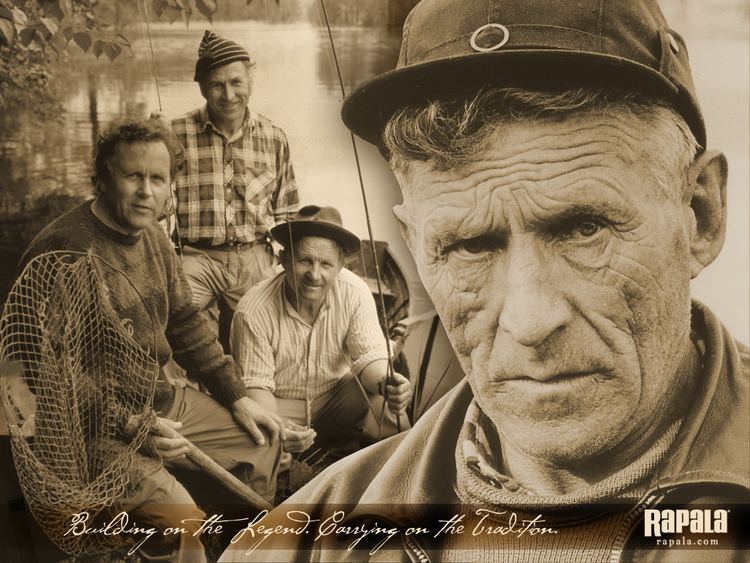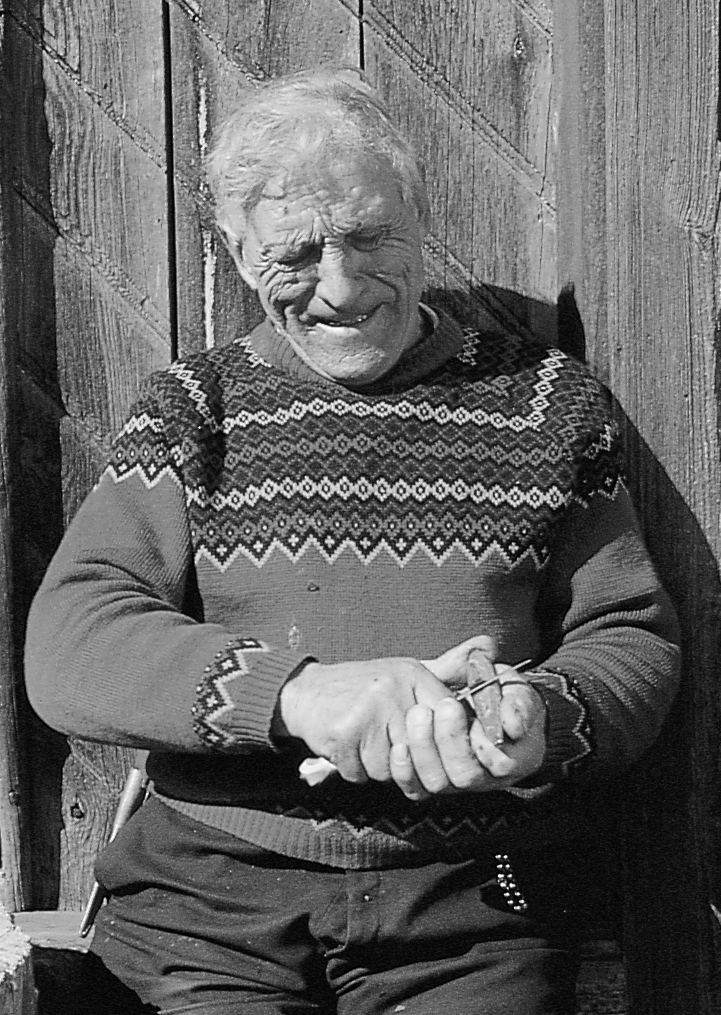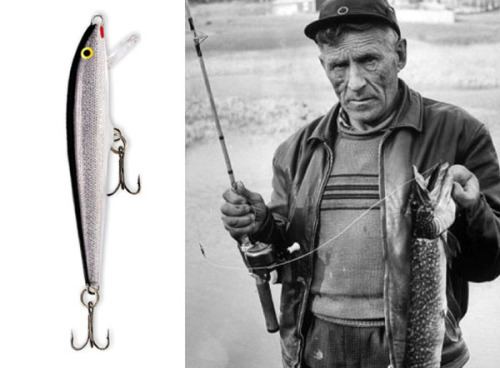Name Lauri Rapala | Died 1974 | |
 | ||
Lauri rapala igfa fishing hall of fame
Lauri Rapala (1905, Sysmä – 1974), Finland, was the founder of Rapala-Normark Group, the world's largest fishing lure and tackle producer. He died in 1974 at the age of 69. During the course of his life, he married once and fathered four children. He created one of the first artificial fishing lures in 1936, which later became the Original Floater, a lure for which he would be made somewhat famous.
Contents
- Lauri rapala igfa fishing hall of fame
- Lauri rapala
- Early life
- Early fishing work
- Designing the original lure
- Rising popularity and improving production
- References

Lauri rapala
Early life

Born in Sysmä, Lauri Rapala shared his home with evergreen forests and hundreds of lakes. At the age of seven, his mother Mari and he moved to the parish of Asikkala, around 60 miles from Helsinki. The clergymen at the parish could not remember Mari's surname, Saarinen, and so he simply put it as Rapala, the village in Sysmä Municipality from which they had moved. The Finnish word 'Rapa' means "mud." Finnish children of this time were generally put to work as soon as they became capable, and Rapala did the same.

Rapala met Elma Leppänen when he was in his twenties, and they married in 1928. They lived in her parents house in Riihilahti until 1933. Europe's economy was in a downturn during this period, and it worsened as the effects of the Great Depression in America arrived in Europe. He worked as a lumberjack during the winter, and farmer's hand or commercial fisherman in summer. They had five sons, Reino, Risto, Ensio, Esko, and Kauko.
Early fishing work

For fishing, he netted whitefish and set long lines for perch and pike. Three trout weighing eight pounds earned the equivalent of two weeks pay in a factory nearby; so Rapala would also troll a line with a baited hook to catch trout. He trolled about a thousand hooks on a trotline behind his traditional Finnish fishing boat, known as a soutuvene. He baited all the hooks himself, and since he had no motor for his boat, he rowed 30 miles every day, except in storms.

According to the recollection of his son Risto, Lauri Rapala fished for trout with a homemade fishing rod. When a fish hit, he would trow his pole in the water, and row behind it, to tire the fish. With so much time on the water, Rapala had much time to think, to watch, and to learn how the fish behaved, how the minnows swam, and how the injured minnows were more likely to be eaten by the larger fish. "Our father really understood fishing," says Risto. "He recognized the relationship between bottom structure and where fish are located. He learned how fish fed, and how they moved from one location to another. And Rapala understood the effects of weather on fishing."
Designing the original lure
Rapala thought that an artificial lure could bring in more fish, and therefore more money, in addition to eliminating time needed to bait hooks. After a lot of trial and error, and with the help of a hermit-fisherman who lived on an island of Lake Päijänne, Toivo Pylväläinen, and Rapala's friend Akseli Soramäki, he created a lure with the right wobble to imitate an injured baitfish. It was made of cork, with tinfoil around it and melted photograph negatives as a coating instead of lacquer, which Rapala could not afford. When completed, he tied a string to his thumb, and trolled it behind his boat. Pike and perch attacked it voraciously, and his sons, who were young at the time, claim he would often bring in 600 pounds a day. This is the lure that would become the Original Floater, the most famous fishing lure in the world.
Rising popularity and improving production
When the World War II broke out in Europe in 1939, shortages arose, and Rapala began making his lures from tree bark. During the war, his lure achieved some promotion. Dynamite was sometimes used to obtain fish, but Rapala said his lure would produce more fish. He and his friends had a contest, and he outfished what had been "caught" with dynamite, catching 78 fish in a few hours.
After the war, demand for his lures increased, so he enlisted the help of his sons, teaching them the art of making the lures. Ensio did so well on one that he achieved a national craftsmanship award for it. Elma handled bookkeeping, and wrote and designed promotional copy for the lure boxes. They developed machines to improve efficiency and quality of the lures, to have them sanded and polished, and to make identical lure bodies. To make sure all the lures ran just right, Rapala insisted that all lures be tank tested, and viewed by him for final approval.
